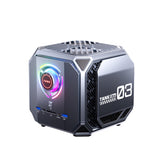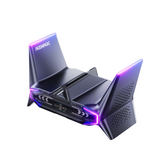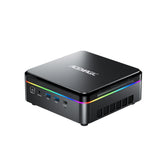TDP Explained: Why Thermal Design Power Matters for Performance and Cooling

What Is TDP?
Thermal Design Power (TDP) refers to the maximum amount of heat that a computer processor or graphics card is expected to generate under normal workloads. It is expressed in watts and helps system designers and users choose appropriate cooling solutions. Unlike peak power draw, which varies constantly, TDP provides a stable baseline for understanding the thermal envelope of a component.
TDP is often misunderstood as the maximum power consumption. Still, it represents the amount of heat that a cooling system should be capable of dissipating to maintain safe operating temperatures. While it doesn’t cover all power scenarios, it serves as a reliable reference for comparing processors or planning airflow within a system.
How TDP Is Measured
Chip manufacturers like Intel and AMD define TDP based on controlled test conditions and anticipated workloads. Intel typically bases TDP on the power draw at base frequency, while AMD may use a broader definition that includes boost scenarios. These variations can complicate direct comparisons across brands.
Real-world usage often shows that power consumption can exceed the listed TDP during high-performance tasks such as gaming, video rendering, or benchmarking. This means cooling systems should accommodate thermal loads beyond the official TDP rating, especially in enthusiast or workstation builds.
TDP’s Role in CPU and GPU Design
For CPUs, TDP influences everything from core counts to boost behavior. A processor with a higher TDP may offer more cores or faster clocks but requires a more capable cooling setup to maintain those speeds without throttling.
GPUs also rely on TDP ratings to define their performance envelope. Under gaming or graphical workloads, a GPU might run close to or even above its rated TDP, causing fans to ramp up or frequencies to dial down in response to thermal pressure.
Why TDP Matters for Performance
Performance is directly tied to a component’s ability to stay cool. When thermal output exceeds what the cooling solution can handle, components reduce speed to avoid overheating. This process, known as thermal throttling , can significantly impact performance in tasks that rely on sustained processing power.
Maintaining efficient heat dissipation helps CPUs and GPUs sustain boost frequencies longer, which translates to smoother multitasking, faster rendering, and improved gaming experiences. TDP serves as a key benchmark when evaluating how a system will perform under pressure.
Cooling Solutions and Their TDP Ratings
Coolers—both air and liquid—are rated by the amount of heat they can dissipate, usually aligned with processor TDP values. An air cooler with a 95W rating is suited for a 95W CPU, while a high-performance liquid cooler might handle 200W or more. Matching the cooler’s capacity to the TDP of the processor helps maintain temperature stability under load.
Choosing an underpowered cooler may lead to higher noise levels, thermal throttling, or reduced lifespan of components. A good thermal solution complements the TDP profile of the chip, ensuring both silence and performance.

TDP and Airflow Within the PC Case
Internal airflow is just as critical as the cooler itself. Even if the CPU cooler is capable, hot air trapped inside a poorly ventilated case can raise overall system temperatures. Proper fan placement—intake at the front, exhaust at the rear or top—helps move hot air out and cool air in.
Fine-tuning fan RPM and maintaining a clean case interior also contribute to effective airflow. When designing a system, especially in compact builds like Mini PCs, maintaining consistent airflow helps maximize thermal performance without compromising on size.

Common Misconceptions About TDP
One of the most widespread misconceptions is that TDP equals maximum power consumption. In reality, the power draw can spike beyond the TDP value under heavy loads. Another misunderstanding is that a higher TDP automatically implies better performance. While higher TDP chips often offer more cores or faster speeds, performance also depends on architecture efficiency, cache, and memory support.
Understanding what TDP represents helps avoid mismatched expectations when selecting components or coolers.
TDP and Overclocking Considerations
Overclocking increases both voltage and frequency, which results in higher heat output. Most overclockers raise the processor’s power and thermal limits in BIOS to achieve better performance. This change effectively increases the operational TDP, demanding stronger cooling solutions.
Without adequate thermal headroom, overclocked systems may become unstable or throttle, negating any performance gains. Balancing thermal output with voltage and frequency settings is essential for sustainable overclocking.
TDP, Power Consumption, and Heat Output
TDP is often confused with power consumption and heat output . While related, they serve different roles:
- TDP is a manufacturer-defined thermal guideline.
- Power consumption is the actual electrical draw during use.
- Heat output is the result of consumed power being converted into thermal energy.
Understanding these differences is critical when assessing overall system efficiency. A processor with better performance per watt will consume less power for the same workload and generate less heat, even if TDP values are similar.
TDP in Laptops vs Desktops
Laptops operate within tighter thermal envelopes. Manufacturers often use configurable TDP (cTDP) to set chips at different power levels based on thermal constraints. For example, a processor might be listed with both a TDP up (higher performance) and a TDP down (lower power draw) value.
Thin-and-light laptops prioritize battery life and quiet operation, so they often use lower-TDP processors that produce less heat. While this reduces peak performance, it helps manage thermals in compact chassis.
Comparing TDP: AMD vs Intel
Intel and AMD use different standards for reporting TDP. Intel typically bases its ratings on base frequency, which can understate real-world power needs. AMD’s measurements often reflect performance closer to boost states, resulting in higher but more realistic TDP numbers.
This difference means users should not rely solely on TDP values when comparing processors across brands. Reviews, thermal benchmarks, and hands-on testing provide better context for performance and cooling needs.

TDP Guidance for Gamers and Builders
Gamers and PC builders should look at TDP when selecting both processors and coolers. A chip with a 125W TDP used for extended gaming sessions needs a cooler rated above that level to prevent thermal throttling.
Thermal monitoring tools like HWMonitor, Ryzen Master, and Intel XTU can help users track CPU wattage, temperatures, and fan speeds. These insights assist in identifying heat-related performance drops or cooling inefficiencies.
Managing and Monitoring TDP in Your System
System BIOS often provides options to configure power limits or raise TDP thresholds for better performance. Power plans in the operating system can also affect how aggressively the processor boosts.
Hardware monitoring software gives real-time insight into system thermals, helping diagnose airflow issues or underperforming coolers. This allows users to fine-tune settings or upgrade cooling to maintain consistent performance.
Frequently Asked Questions (FAQs)
What happens if I exceed my CPU’s TDP?
Your processor will reduce clock speeds and increase fan activity to cool down. This automatic adjustment protects the hardware but may temporarily reduce performance.
How does TDP affect gaming performance?
TDP affects how long your CPU or GPU can maintain peak boost speeds. Insufficient cooling leads to thermal throttling, resulting in lower and less consistent frame rates during gameplay.
Do all coolers support the same TDP ratings?
No. Each cooler has a specific TDP rating that indicates how much heat it can dissipate. Using a cooler with too low a TDP capacity for your processor can lead to overheating or instability.
Can I run a high-TDP chip without liquid cooling?
Yes, provided you use a high-quality air cooler that matches or exceeds the chip’s TDP rating, along with good case airflow. Liquid cooling is beneficial but not always necessary.
Is a higher TDP always better?
Not necessarily. A higher TDP often means greater power consumption and heat, which may allow for more performance—but only if supported by adequate cooling and system design.
How do I calculate the total TDP for my system?
Add the TDPs of major components such as the CPU, and GPU, and potentially high-draw components like power-hungry add-in cards to estimate your system’s cooling requirement.
Does undervolting reduce TDP?
While undervolting doesn’t change the official TDP value, it reduces actual power consumption and heat output, making your chip run cooler and potentially quieter.
Why do laptops have lower TDPs than desktops?
Laptops have limited space for cooling systems and rely on compact fans or heat pipes. To operate safely within those limits, manufacturers design laptop chips with lower TDP ratings.
Can BIOS updates affect TDP behavior?
Yes. BIOS updates sometimes adjust how a motherboard handles thermal and power limits. This can lead to improved thermal performance or, in some cases, increased heat output.

Conclusion: Understanding TDP for Smarter Hardware Decisions
TDP is a foundational concept in computer hardware design, directly impacting performance, cooling, and component selection. Whether choosing a CPU for a Mini PC, building a gaming rig, or configuring a thermal solution, knowing how TDP works helps users make informed, stable, and efficient choices. Matching components based on thermal requirements results in a system that runs cooler lasts longer, and performs more consistently.









